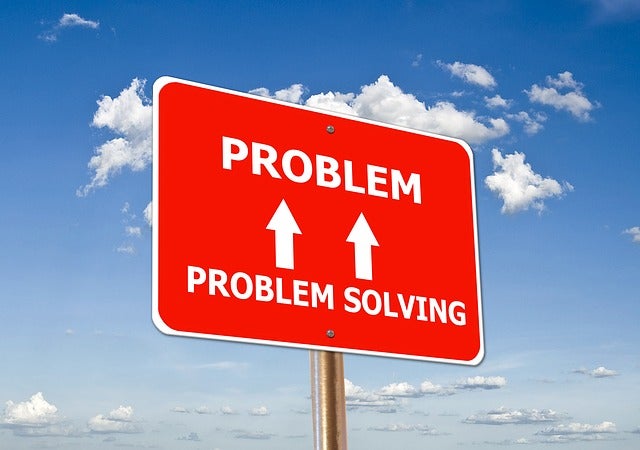The role of questions in problem-solving
Published 3:13 pm Wednesday, September 11, 2019
Let’s talk about hay. Yes, that stuff that grows in a field and is harvested by a dairy farmer who feeds it to his dairy cows who produce milk that the dairy farmer sells to generate income to support his family and his farm business.
Imagine a dairy farm manager who had a goal of producing hay with 20 percent protein. Instead, the manager’s hay had only 15 percent protein. He has a problem…low-quality hay.
Why is that a problem? Because higher levels of protein in the hay produce higher yields of milk from the dairy cows. Lower yields on the hay mean lower prices for the milk.
The farm manager’s knee-jerk reaction is that the weather did not cooperate and it’s just tough luck for the farm owner. WRONG!
When faced with problem-solving, one must first remember that problems cannot be solved until they are broken down into issues.
And how do we identify the issues? By asking questions.
- WHY does the harvested hay have only 15 percent protein? The weather didn’t cooperate.
- WHY was the weather a problem? The rain damaged the hay.
- WHY did the rain damage the hay? We were unable to harvest the hay quickly.
- WHY were you unable to harvest the hay quickly? We were a person short during harvest so the person driving the chopper had to stop to haul the hay to the barn.
- WHY were you a person short during harvest? We have no plan for backup labor when an employee quits or is sick.
- WHY don’t you have a plan for backup labor? No one has been given the responsibility for developing and implementing a plan for backup labor.
So, it looks like the cause of the problem of low-quality hay was not the knee-jerk reaction of uncooperative weather, it was actually due to the lack of a plan and follow-through.
Whenever knee-jerk reactions are relied upon without further questioning and investigating, the problems are bound to happen again.
Let’s take a look at a different situation – deaths in the USA.
- 2,813,503 people died in 2017 in the United States.
- 39,773 died from gun-related causes.
- 23,855 of the gun-related deaths were suicides
- 10,560 of the gun-related deaths were homicides
- 8,448 of the homicide deaths were gang-related
- 116 of the gun-related deaths were in mass-shootings
Suicide gun deaths represented 60% of gun-related deaths, mass-shootings represented 0.3%. If you were to look at these statistics, which problem would you choose to solve first?
Me? I’d go after the 23,855 gun-related suicides before trying to fix the 116 from mass-shootings. Although in practice, working on the suicide problem would most likely also produce some solutions for the mass shooting problem.
Every 12 minutes someone in this country dies of suicide, which has caused it to become the second leading cause of death for individuals between 18 and 34.
A non-profit community health organization called Family Houston has been helping the Houston community for more than 100 years. Their mission is to create a stronger community for tomorrow by helping individuals and families meet the challenges they face today. Helping others help themselves.
Over the last five years at Family Houston, there has been an increase in the number of clients diagnosed with depression. It is one of the most common mental health disorders their counselors treat. In 2018, 44 percent of their clients reported symptoms consistent with depression and 17 percent had some sort of suicidal thoughts.
Through personalized treatment plans, 77 percent of children and 69 percent of adults seen by Family Houston counselors during the 2018 fiscal year said they improved or maintained their happiness.
That’s a great success rate!!! It’s also a great example of what could be done if we focus more on the real issues of gun violence rather than knee-jerk reactions.
We do not pay our elected officials to make knee-jerk decisions, we pay them to represent us and to spend the time asking questions to come up with real-world solutions. Or is it just plain politics and they don’t care about real solutions?
That should be enough said. However, I’ll throw two more at you. Lagniappe as the Cajun side of my family would say:
- White males accounted for 69.67% of suicide deaths in 2017. Using a common theme in the mainstream press today, that translates to “Suicide is Racist”. Should something be done about that?
- Oh yeah, and what about the 2nd Amendment?
J. David Derosier consults with small business on planning and marketing issues, and provides web design and hosting services through OhainWEB.com, an accredited business with the Better Business Bureau that is rated A+ by BBB. He can be reached at JDAVID@Strategy-Planning.info







